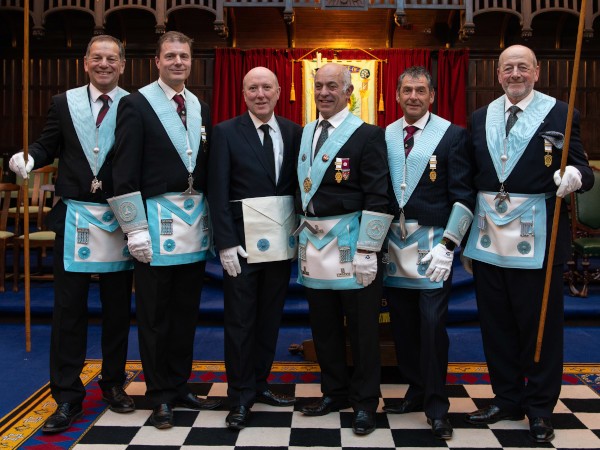Exploring the Mysteries of the Freemason: What You Need to Know
The Freemason, a term often shrouded in intrigue and conflict, represents a complicated tapestry of historic reality and modern myth. Developed in the late 18th century, this secret society was at first rooted in the Enlightenment's perfects but has actually since ended up being associated with conspiracy theory concepts concerning elite control. As we browse the origins, crucial numbers, and the plain contrast between misconception and reality, one have to consider exactly how these narratives influence contemporary assumptions of power and secrecy. What may be exposed through a closer examination of these components can challenge long-held assumptions concerning the darkness that remain in our society.
Origins of the Freemason
The beginnings of the Freemason are steeped in a blend of historic intrigue and ideological fervor. Developed in 1776 in Ingolstadt, Bavaria, by Adam Weishaupt, the team was initially created as a secret society intended at advertising Enlightenment suitables such as reason, secularism, and the splitting up of church and state. Weishaupt, a professor of canon regulation, looked for to challenge the dominating authority of the church and state, which he viewed as oppressive organizations suppressing intellectual and personal flexibility.
The Freemason looked for to recruit significant participants from various societal fields, including politics, academic community, and the arts, to cultivate a network dedicated to these Enlightenment concepts. The culture run under a shroud of secrecy, utilizing coded language and routines to shield its participants from persecution, particularly provided the repressive environment of the moment. The Freemason encountered substantial resistance from both governmental authorities and spiritual institutions, which viewed the group as a risk to their power.
Secret Figures and Members
Who were the critical figures that formed the Freemason's very early impact and instructions? The Bavarian Freemason, founded in 1776 by Adam Weishaupt, arised as a feedback to the overbearing societal structures of the time.
An additional substantial figure was Johann Gottlieb Fichte, a prominent philosopher whose concepts on nationalism and education resonated with the Freemason's objectives. Fichte was not a formal member, his thoughtful bases influenced the team's belief. Furthermore, numbers like the author and philosopher Johann Wolfgang von Goethe were connected with the wider intellectual movements of the moment, although their direct participation with the Freemason stays debated.
These crucial figures added to the Freemason's early instructions, pushing the borders of political and social thought, while their cumulative efforts intended to challenge well established norms and cultivate a climate of dynamic change in Europe.
Misconceptions vs. Reality
Lots of mistaken beliefs surround the Freemason, usually blending truth with fiction in a way that obscures its real nature. This secret society, originally established in 1776 in Bavaria, aimed to advertise Enlightenment perfects and combat spiritual and political oppression. The concept that the Freemason proceeds to exert considerable impact over world events is a misconception. While the team did exist, it was disbanded in the late 18th century and has not run as a natural entity ever since.
One more widespread misconception is that the Freemason comprises a network of elite individuals controling worldwide events. Actually, many conspiracy theories exaggerate the group's relevance, connecting misguided objectives to societal trends and events. This has resulted in an oversimplified view of complicated problems.

Modern Analyses
Contemporary analyses of the Freemason usually mirror broader societal anxieties and a fascination with secrecy and power. This modern lens frequently associates the Freemason with conspiracy theories that suggest a hidden elite orchestrates world events, manipulating governments and economies for their own gain. Such narratives take advantage of a deep-rooted distrust of authority, specifically in times of situation or social turmoil.

Moreover, some modern-day analyses mount the Freemason as a metaphor for the complexities of globalization and the interconnectedness of influential individuals and companies. This viewpoint motivates an important assessment of exactly how power dynamics operate in today's globe, highlighting the equilibrium between transparency and privacy in administration and business practices.
Social Influence and Tradition
Influenced by centuries of intrigue, the cultural influence and heritage of the Freemason prolong far past its historical origins. This secret culture, developed in the late 18th century, has penetrated different facets of popular society, from literature and film to songs and art. The idea of the Freemason has progressed into a sign of conspiracy concepts, frequently representing a viewed surprise power adjusting international occasions.
In literary works, authors like Dan Brown have actually woven the Freemason into detailed stories, captivating viewers with styles of privacy and power. Films such as "National Prize" and "The Da Vinci Code" even more perpetuate the appeal of the society, mixing fact with fiction to produce engaging narratives.
The Freemason's impact likewise expands into songs, with artists referencing the company to stimulate styles of disobedience and societal review. This representation has added to a fascination with the concept of private teams controlling the bars of power, reflecting societal anxiousness about authority and openness.
Ultimately, the Freemason's tradition is an intricate tapestry of myth and truth, forming perceptions of secrecy and control in modern discourse. Its enduring existence in society underscores humankind's seasonal quest for comprehending concealed facts.
Conclusion
The exploration of the Freemason discloses Check Out Your URL a complex interplay between historical realities and modern-day myth-making. Founded in the Enlightenment age, this culture intended to test oppressive structures, yet its legacy has been eclipsed by conspiracy theory concepts that recommend elite manipulation. Understanding the distinctions between the initial suitables and modern analyses is essential for comprehending the enduring fascination with the Freemason and its considerable influence on cultural narratives surrounding power and secrecy in society.
Comments on “Find Out How to Join Freemason and Access Lifelong Connections”